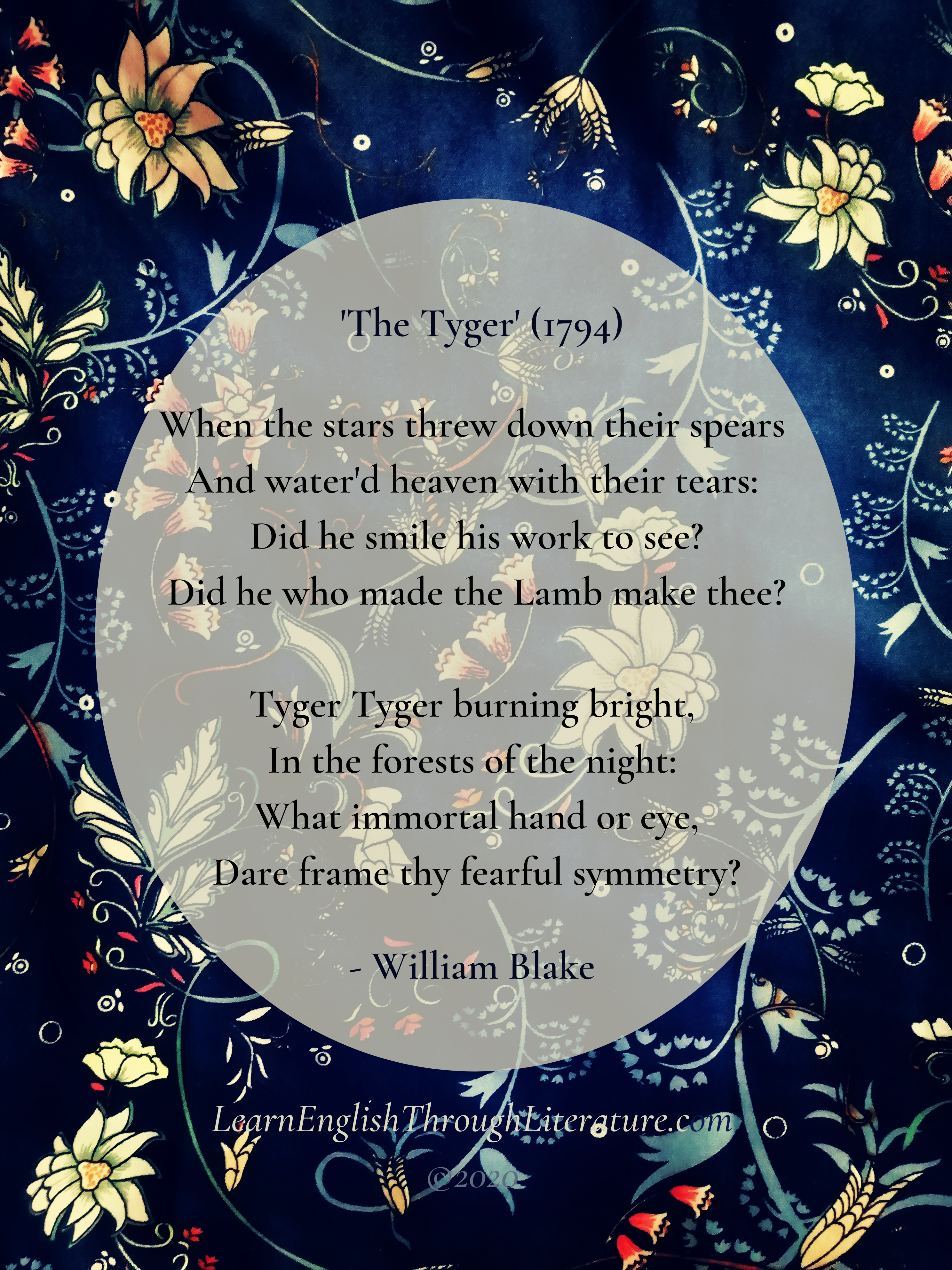As a short break from the grammatical lessons we have had of late, todays’ lesson will be short and sweet!
I have been looking forward to an opportunity to share a favourite poem of mine by William Blake (1757-1827). It is called ‘The Tyger’ (an archaic or old-fashioned way of spelling ‘tiger’) and is often memorised by schoolchildren in English speaking countries.
Here are some of the first stanzas of the poem, together with my observations. When you have finished reading this short lesson, I would recommend reading the poem in full here.
…
📝 #1 REPETITION IS NOT ALWAYS WRONG
English teachers often tell their students, ‘do not repeat the same words, as this is a sign of poor vocabulary and expression’. There is a point to that advice: where possible, we should always vary our vocabulary and choose precise words to describe different entities.
That said however, it is often very effective to repeat selected words for emphasis, especially in spoken English. We often notice this in official speeches or persuasive language. William Blake the poet does this in a striking and unforgettable way when he repeats ‘Tyger Tyger’ here:
Tyger Tyger, burning bright,
In the forests of the night;
What immortal hand or eye,
Could frame thy fearful symmetry?
Or here, where he repeats ‘And what … & what … What … & what’ – it has its own special syncopated rhythm:
And what shoulder, & what art,
Could twist the sinews of thy heart?
And when thy heart began to beat,
What dread hand? & what dread feet?
– William Blake, ‘The Tyger’ (1794)
These repetitions captivate the listener’s ear subconsciously, so that they pay attention to the differences between the repeated words: in this stanza, those differences would include ‘shoulder’, ‘art’, ‘hand’, and ‘feet’.
…
📝 #2 ALLITERATION
Alliteration simply means the occurrence of the same letter at the beginning of several words: for example, ‘Peter Piper picked a pickled pepper’. It is a technique used by many poets of course, but also used by any English speaker who wants to add a nice touch to their language, especially in a speech or formal communication.
✍️ English speakers love alliteration, and many mottos are made memorable by being phrased in an alliterative form.
William Blake interweaved an alliteration of words having a ‘d‘ sound in his poem – can you notice them?
In what distant deeps or skies.
Burnt the fire of thine eyes?
On what wings dare he aspire?
What the hand, dare seize the fire? …… What the anvil? what dread grasp,
Dare its deadly terrors clasp!
– William Blake, ‘The Tyger’ (1794)
…
📝 #3 RHETORICAL QUESTIONS
Rhetorical questions are questions that speakers often use simply to engage the listener, because the answer to the question is already known or accepted. William Blake’s rhetorical questions have a dramatic effect as he wonders aloud:
What immortal hand or eye,
Could frame thy fearful symmetry?… In what distant deeps or skies.
Burnt the fire of thine eyes? …… Did he smile his work to see?
Did he who made the Lamb make thee?
– William Blake, ‘The Tyger’ (1794)
…
If you liked this poem by Blake and would like to read another, why not check out a short lesson (Lesson #108) I wrote on his poem, ‘The Sick Rose’. Having now read ‘The Tyger’, you will probably notice similarities of style if you read both poems. As I have written before, English literature – including poetry – is for everyone to enjoy!




